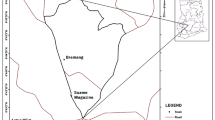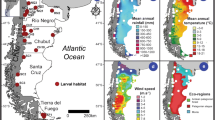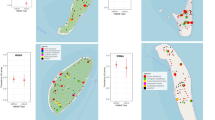Abstract
Aim of the study was to find relations between the habitat pattern and the pattern of mosquito assemblages. Microhabitats of shallow lakes, riversides, forests and humid grasslands were studied. 1,239 samples (mosquito assemblages and potential habitat variables) were taken in different habitats in Hungary. Cluster analysis, Pearson correlation, MDS and PCA were used. Results showed that the mosquito larval assemblages are related to characteristic vegetation types: (a) reed beds and sedge-marshes with temporary character; (b) reed beds and/or sedge-marshes with permanent character; (c) the fresh grasslands characterized by temporary water supply; (d) the marginal zone of the open permanent waters (e.g., lakes); (e) the closed forest vegetation types of temporary water supply. Presence of mosquito species and their larval assemblages is dependent on characteristic habitat-mosaics. Mapping of this background pattern covers the mapping of mosquito assemblages.
Similar content being viewed by others

References
Alfonzo D., Grillet M.E., Liria J., Navarro J.-C., Weaver S.C. & Barrera R. 2005. Ecological characterization of the aquatic habitats of mosquitoes (Diptera: Culicidae) in enzootic foci of Venezuelan equine encephalitis virus in Western Venezuela. J. Med. Entomol. 42(3): 278–284. DOI: 10.1043/0022-2585(2005)042(0278:ECOTAH)2.0.CO;2
Andersen A.N., Fisher A., Hoffmann B.D., Read J.L. & Richards R. 2004. Use of terrestrial invertebrates for biodiversity monitoring in Australian rangelands, with particular reference to ants. Austral. Ecol. 29(1): 87–92. DOI: 10.1111/j.1442-9993.2004.01362.x
Barkman J.J. 1979. The investigation of vegetation texture and structure, pp. 123–160. In: Werger M.J.A. (ed.), The Study of Vegetation, Junk, The Hague, 316 pp. ISBN 90 6193 594 6
Bauer N. & Kenyeres Z. 2007. Seasonal changes of microclimatic conditions in grasslands and its influence on orthopteran assemblages. Biologia 62(6): 742–748. DOI: 10.2478/s11756-007-0135-z
Becker N., Petric D., Zgomba M., Boase C., Dahl C., Lane J. & Kaiser A. 2003. Mosquitoes and Their Control. Kluwer Academic/Plenum Publishers, New York, USA, 498 pp. DOI: 10.1007/978-3-540-92874-4
Borhidi A. 2003. Magyarország növénytársulásai [Plant associations of Hungary]. Akadémiai Kiadó, Budapest, 688 pp.
Bölöni J., Molnár Zs., Illyés E. & Kun A. 2007. A new habitat classification and manual for standardized habitat mapping. Annali di Botanica (nuova serie) 7: 55–76.
Dangerfield J.M., Pik A.J., Britton D., Holmes A., Gillings M., Oliver I., Briscoe D. & Beattie A.J. 2003. Patterns of invertebrate biodiversity across a natural edge. Austral. Ecol. 28(3): 227–236. DOI: 10.1046/j.1442-9993.2003.01240.x
Denno R.F. 1977. Comparison of the assemblages of sap-feeding insects (Homoptera — Hemiptera) inhabiting two structurally different salt marsh grasses in the genus Spartina. Envir. Entomol. 6(3): 359–372.
Dévai Gy. 1997. IX.3.2. Víztér-tipológiai törzsadattár (V-NéR) [Water-types database], pp. 293–298. In: Fekete G., Molnár Zs. & Horváth F. (eds), Nemzeti Biodiverzitás-monitorozó Rendszer II. A magyarországi élőhelyek leírása, határozója és a Nemzeti élőhely-osztályozási Rendszer [Description and Handbook of Habitats in Hungary and National Habitat System II.], Magyar Természettudományi Múzeum, Budapest.
Fekete G., Molnár Zs. & Horváth F. (eds) 1997. Nemzeti Biodiverzitás Monitorozó Rendszer II. Magyarországi élőhelyek [Hungarian Biodiversity Monitoring System. Hungarian habitats]. MTM, Budapest, 374 pp.
Fischer S. & Schweigmann N. 2004. Culex mosquitoes in temporary urban rain pools: Seasonal dynamics and relation to environmental variables. J. Vector Ecol. 29(2): 365–373.
Fuhlendorf S.D. & Smeins F.E. 1996. Spatial scale influence on longterm temporal patterns of a semi-arid grassland. Landsc. Ecol. 11(2): 107–113.
Hammer Ø., Harper D.A.T. & Ryan P.D. 2001. PAST: Paleontological Statistics Software Package for Education and Data Analysis. Palaeontologia Electronica 4(1): 9 pp.
Herben T., During H.J. & Law R. 2000. Spatio-temporal Patterns in Grassland Communities, pp. 48–64. In: Dieckmann U., Law R. & Metz J.A.J. (eds), The Geometry of Ecological Interactions: Simplifying Spatial Complexity, Cambridge University Press, © International Institute for Applied System Analysis.
HilleRisLambers R., Rietkerk M., van den Bosch F., Prins H.H.T. & de Kroon H. 2001. Vegetation pattern formation in semi-arid grazing systems. Ecology 82(1): 50–61. DOI: 10.1890/0012-9658(2001)082[0050:VPFISA]2.0.CO;2
Jasieniuk M.A. & Johnson E.A. 1982. Peatland vegetation organization and dynamics in the western subarctic, North-west Territories, Canada. Can. J. Bot. 60: 2581–2593.
Joern A. 1982. Vegetation structure and microhabitat selection in grasshoppers (Orthoptera: Acrididae). Southwest. Nat. 27(2): 197–209.
Joosse E.N.G. & Verhoef H.A. 1987. Developments in ecophysiological research on soil invertebrates. Adv. Ecol. Res. 16: 175–248. DOI: 10.1016/S0065-2504(08)60089-6
Lawton J.H. 1976. The structure of the arthropod community on bracken. Bot. J. Linn. Soc. 73(1—3): 187–216. DOI: 10.1111/j.1095-8339.1976.tb02022.x
Meron E., Gilad E., von Hardenberg J., Shachak M. & Zarmi Y. 2004. Vegetation patterns along a rainfall gradient. Chaos, Solitons and Fractals 19(2): 367–376. DOI: 10.1016/S0960-0779(03)00049-3
Mohrig W. 1969. Die Culiciden Deutschlands — Untersuchungen zur Taxonomie, Biologie und Ökologie der einheimischen Stechmücken. Parasitologishe Schriftenreihe (Heft 18), VEB G. Fischer Verlag, Jena, Germany, 260 pp.
Paradise C.J. 2000. Effects of pH and resources on a processing chain interaction in simulated treeholes. J. Anim. Ecol. 69(4): 651–658. DOI: 10.1046/j.1365-2656.2000.00423.x
Pickett S.T.A. & Cadenasso M.L. 1995. Landscape ecology — spatial heterogeneity in ecological systems. Science 269(5222): 331–334. DOI: 10.1126/science.269.5222.331
Podani J. 2001. SYN-TAX 2000. Computer Program for Data Analysis in Ecology and Systematics. Scientia Publishing, Budapest, 53 pp.
Purves D.W. & Law R. 2002. Fine-scale spatial structure in a grassland community: quantifying the plant’s-eye view. J. Ecol. 90(1): 121–129. DOI: 10.1046/j.0022-0477.2001.00652.x
Rhoades D.F. & Cates R.G. 1976. A general theory of plant antiherbivore chemistry, pp. 168–213. In: Wallace J.W. & Mansell R.L. (eds), Biochemical Interactions Between Plants and Insects, Recent Advances in Phytochemistry, Vol. 10, Plenum, New York & London.
Sattler M.A., Mtasiwa D., Kiama M., Premji Z., Tanner M., Killeen G.F. & Lengeler C. 2005. Habitat characterization and spatial distribution of Anopheles sp. mosquito larvae in Dar es Salaam (Tanzania) during an extended dry period. Malaria J. 4: 4–19. DOI: 10.1186/1475-2875-4-4
Schäfer M. 2004. Mosquitoes as a Part of Wetland Biodiversity. Acta Universitatis Upsaliensis. Comprehensive Summaries of Uppsala Dissertations from the Faculty of Science and Technology 1042, Uppsala, 64 pp.
Shapiro A.M. & Shapiro A.R. 1973. The ecological associations of the butterflies of Staten Islands. J. Res. Lepid. 12(2): 65–128.
StatSoft Inc. 1995. STATISTICA for Windows (Computer program manual). StatSoft, Inc., 2325 East 13th Street, Tulsa.
Stinson C.S. & Brown V.K. 1983. Seasonal changes in the architecture of natural plant communities and its relevance to insect herbivores. Oecologia 56(1): 70–78. DOI: 10.1007/BF00378218
Swanson F.J., Kratz T.K., Caine N. & Woodmansee R.C. 1988. Landform effects on ecosystem patterns and processes. Geomorphic features of the earth’s surface regulate the distribution of organisms and processes. Bioscience 38(2): 92–98.
Swihart R.K., Lusk J.J., Duchamp J.E., Rizkalla C.E. & Moore J.E. 2006. The roles of landscape context, niche breadth, and range boundaries in predicting species responses to habitat alteration. Divers. Distrib. 12(3): 277–287. DOI: 10.1111/j.1366-9516.2006.00242.x
Taylor P.D., Fahrig L., Henein K. & Merriam G. 1993. Connectivity is a vital element of landscape structure. Oikos 68(3): 571–573
Tischendorf L. & Fahrig L. 2000. On the usage and measurement of landscape connectivity. A reply. Oikos 90: 7–19.
Wang X. & Horiguchi I. 1998. The relationship between remotely sensed canopy surface temperature and canopy structure for crop fields. J. Fac. Agricult. Hokkaido Univ. 68(1): 45–60.
Zehm A., Nobis M. & Schwabe A. 2003. Multiparameter analysis of vertical vegetation structure based on digital image processing. Flora 198(2): 142–160. DOI: 10.1078/0367-2530-00086
Zhang S., Wang R.-S. & Zhang X.-S. 2007. Identification of overlapping community structure in complex networks using fuzzy c means clustering. Physica A 374(1): 483–490. DOI: 10.1016/j.physa.2006.07.023
Author information
Authors and Affiliations
Corresponding author
Rights and permissions
About this article
Cite this article
Bauer, N., Kenyeres, Z., Tóth, S. et al. Connections between the habitat pattern and the pattern of the mosquito larval assemblages. Biologia 66, 877–885 (2011). https://doi.org/10.2478/s11756-011-0091-5
Received:
Accepted:
Published:
Issue Date:
DOI: https://doi.org/10.2478/s11756-011-0091-5



